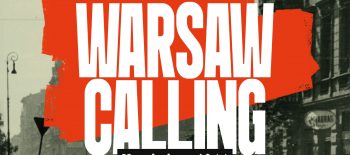Where the Polish jazz of yesterday soundtracked the quest for democracy and freedom by Polish society, the Polish jazz of today has broken more boundaries, absorbed new elements, explored new possibilities.
This, then, is jazz as a living art form; jazz that goes its own way.
The Polish Cultural Institute in London is proud to present New Polish Jazz: Ones To Watch: a series of five interviews with Polish jazz musicians hosted by jazz critic Jane Cornwell (Jazzwise, London Evening Standard) and to be published over the period of two weeks in July. Each artist is wildly different. All are authentic, visionary and internationally acclaimed.
Wacław Zimpel, clarinettist, multi-instrumentalist, composer and producer.
Jerzy Mączyński, saxophonist, composer, founder of free jazz group P.E Quartet and leader of Jerry & the Pelican System.
Marek Pedziwiatr, pianist, composer, leader of sextet EABS and member of free jazz quartet Błoto.
Joanna Duda, pianist, composer and interdisciplinary artist.
Piotr Orzechowski, the pianist and composer also known as Pianohooligan.
Informal, chatty and recorded during lockdown, each (12 – 15 minute) interview affords the opportunity to get to know the featured musician. To hear their stories, watch them play, go deeper into their practice. To variously understand why they are rated by UK tastemaker Gilles Peterson (Pedziwiatr), or regularly collaborate with UK electronic music hero James Holden (Zimpel), or have been praised by legendary Polish composer Krystztof Penderecki (Orzechowski). Why they’ve garnered a cult following for their clever leveraging of technology (Duda), for the ways in which they’re redefining the avant-garde (Mączyński).
The jazz music that each artist makes is as challenging and complex as it is accessible and compelling. “Speaking to each of these five musicians was both fascinating and humbling,” says Cornwell. “I wasn’t that familiar with Polish jazz when I set out, and I was blown away by the creativity and vision of each player.
“Each has their distinctive sound,” she continues. “But they’re all adventurous and outward looking, as familiar with Mingus, Monk and Charlie Parker as they are Melomani, Krysztof Komeda, Michal Urbaniak and other Polish jazz icons.
“Like most younger jazz artists they’re influenced by hip hop, electronica and the music of their heritage; EABS’ 2019 album Slavic Spirits (Astigmatic) being a great example. They respect Chopin and classical music but they’re not afraid to rip up the rule book, or turn genres including jazz on their heads.”
Once upon a time, jazz was banned in Poland – not that anybody behind the Iron Curtain knew exactly what jazz was. Jazz has no single definition. But it does have traits, themes, moments. And where the current global jazz renaissance is largely confined to major cities – Bogota, Chicago, London – jazz in Poland is thriving countrywide. New Polish Jazz: Ones To Watch is a case in point.
From the port city of Gdynia on the northern Baltic Coast (Duda) to the southern city of Krakow near the border with the Czech Republic (Orzechowski), from the capital city of Warsaw in east-central Poland (Mączyński, Zimpel) to historical Wroclaw on the Oder River in the west (Pedziwiatr), musicians are making jazz that’s original, sometimes improvised, always spirited.
Many studied music outside Poland, at Berklee’s campus in Spain or conservatoires in Denmark and the Netherlands. Pre-pandemic, they played international jazz festivals, spent time collaborating with musicians in India, Britain, the woods outside Wroclaw. Adept multi-taskers, they create bold, edgy videos, make music for film and theatre. The drive to experiment is a given.
All of which and more is captured on New Polish Jazz: Ones To Watch.
Five videos, each one an invitation to get to know a leading light of jazz in Poland.
Don’t sleep. There’s not a moment to lose.
Now’s the time.



